Collecting the stamps of South Africa is fun for the beginner and advanced collector alike. It has been a popular collecting area for many years. The Victorian era issues of Pre-Union states are studied with great passion and form an essential part of any collection of classic issues. The Union period (1910/61) can be collected very simply, or in much greater depth, studying different printings issued over time – it’s up to you! South Africa unusual among British Commonwealth countries as many of its stamps were issued in bilingual pairs. The modern Republic of South Africa issues (1961 to date) are full of topical interest, with colourful and vibrant reflections of the country.
South Africa’s philately can be separated into three main sections. First came the Pre-Union, with the four main states of Cape of Good Hope, Natal, Orange Free State and Transvaal. During this period there were two Boer Wars, the end of the second war leading to the Transvaal and Orange Free State coming under British administration.
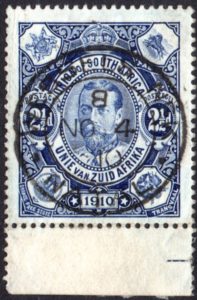
The four states were combined into The Union of South Africa on 31st May 1910, a dominion run as an autonomous community of the British Empire. The first stamp of this new country was issued on November 4th 1910 to commemorate the opening of the new Parliament. The first definitive set was issued on 1st September 1913, known as the “King’s Heads” as they depict the image of King George V. They are a colourful issue and make a fine addition to any South Africa stamp collection. The stamps were in use over a long period, hence they can be found in a range of different shades from the different printings. Many of these shades are inexpensive and can add extra interest to your collection.
So what happened in the three years between the start of the Union in 1910 and the issue of the first definitive stamps in 1913? Known as “Interprovincials” the stamps of the four different Pre-Union states could be used across the whole of the Union. Hence we see Natal stamps used in the Cape, Transvaal used in the Orange Free State and so on. This fascinating and widely collected period runs from 31st May 1910 to 31st August 1913. The stamps must be used, with a readable postmark showing an identifiable village or town name and the date within the correct period.
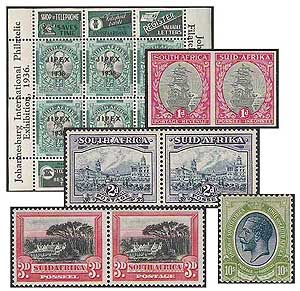
In 1926 we see the first bilingual pairs of stamps with the issue of the ½d Springbok, 1d Sailing Ship and the 6d Orange Tree. Along with the designs from the 1927 Pictorial definitives, known as the “London Pictorials,” these basic designs continued in use (with identifiable changes) until as late as 1954 when they were replaced by the Wildlife definitives. The Wildlife definitive underwent a change of watermark in 1959, then a change to decimal currency followed in February 1961, before the Union period came to an end.
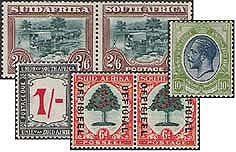
During this time an interesting range of Postage Due and Official stamps were issued. These can form separate collections in their own right, or form part of a larger Union collection, should you desire. Postage Dues were used to collect an underpayment or additional postal charge in the mail. They are often found used on envelopes and can be collected thus. Governmental departments and the Civil Service used official stamps, which were the postage stamps of the day overprinted “OFFISIEEL” and “OFFICIAL.” Both Postage Dues and Officials were available to collectors through the main Post Offices and later, the Philatelic Bureau.
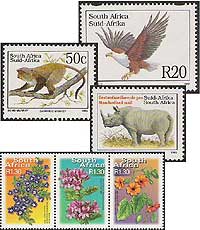
On 31st May 1961, exactly fifty years after the inauguration of the Union, South Africa became an independent country with the formation of The Republic of South Africa, known as RSA for short. The recently issued decimal Union definitives were replaced by a set of new, more modern looking stamps. Like the earlier bilingual pairs, the basic designs were used for many years and were not replaced with a new definitive set until 1974. There have been many beautiful designs issued throughout the Republic period, with much topical interest. There are plenty of issues for collectors of wildlife, birds, transport and sport, to name just a few thematics, to choose from.
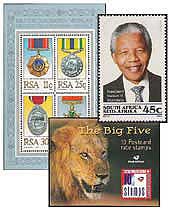
Another area with lots of stamps to please the thematic collector is the former Homelands. The Homelands were territories within South Africa that the native peoples administrated, but were not recognised internationally as independent countries, however the stamps were accepted as valid on international mail. Unfortunately the formation of the four Homelands was rooted in the apartheid policies of the past. On 27th April 1994 the Homelands were reincorporated into the Republic of South Africa, the day that Nelson Mandela became President of South Africa.
While recent South Africa issues have continued to depict many popular themes, the modern stamps are not just pretty and colourful labels. There are also many different printings of the definitive issues available, with plenty to keep the keen philatelist entertained.
So you see, South Africa is a country whose philately can offer something to almost all types of collector. In turn I hope this website can offer something to you – HAPPY COLLECTING!